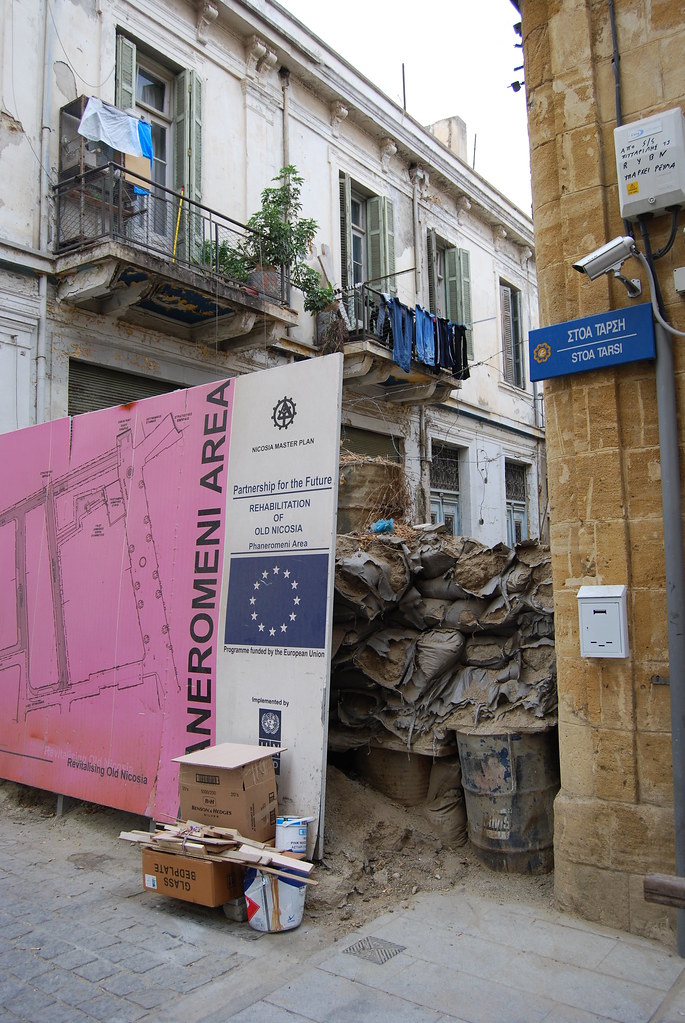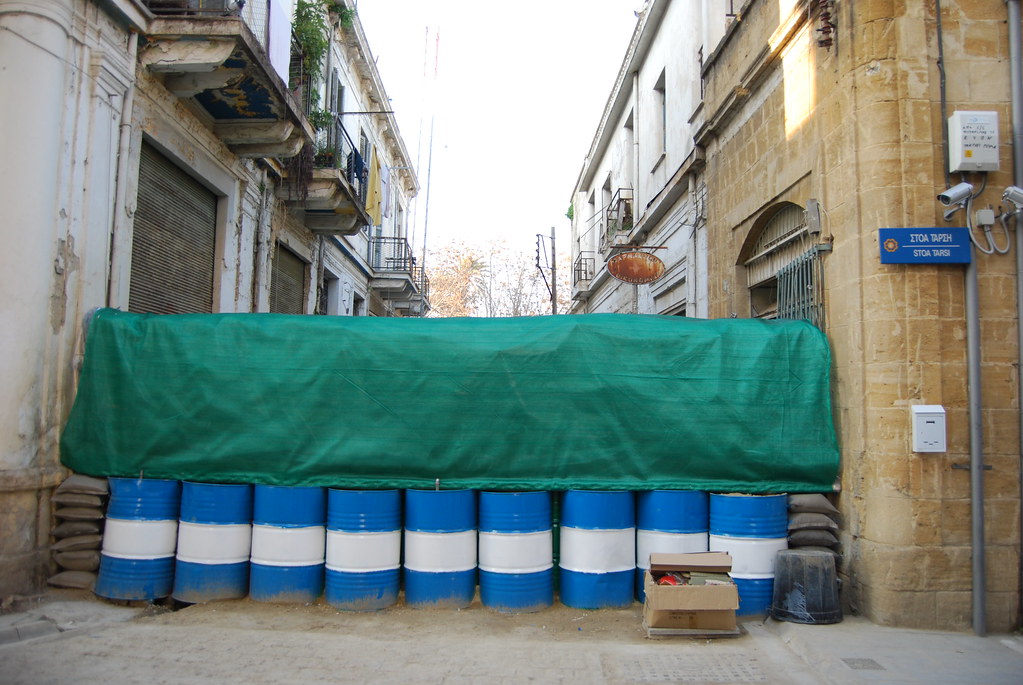In 1964, after intercommunal violence erupted between the Greek and Turkish Cypriot communities in response to constitution adjustments, a green pencil line was drawn across the map of Cyprus by the general of the peacekeeping force that preceded the formation of the United Nations Peacekeeping Force in Cyprus (UNFICYP). This 112 mile long zone extends from east to west coast on the island and tears directly through the walled city of Nicosia (part of which is only 15 meters from the front door of my hostel). The Green Line has two edges, one on the north side that marks the outer edge of the Turkish military zone that denotes the southern border of what is known internationally as de facto territory occupied by the Turkish military, or internally as the Turkish Republic of Northern Cyprus. The other edge marks the boundary of the United Nations-controlled Buffer Zone (within the Green Line) and the northern edge of the "government controlled area" of the Republic of Cyprus.
The northern Green Line border, within Nicosia, is constructed of large concrete or metal walls that have Turkish military signs posted on them. These permanent and imposing structures dead end streets and forewarn any visitors that you have reached the boundary of a partitioned land.
Meanwhile, the southern Green Line border is constructed of sandbags and barrels that represent the the armed struggle that resulted in the summer in 1974. These ragged and war torn barricades portray an open wound in the landscape and an unknown land that exists beyond the wall... "the other side" (Papadakis 1998, Webster & Timothy 2006, Lisle 2007)
Most of the dead ended streets and shops look like the images above. The buildings along the Green Line have generally fallen into complete disrepair after being frozen in time since 1974. However, while walking around with my parents last month, I noticed that new barricades are being erected in the same style that they were 35 years ago during wartime.The fresh paint on the barrels and the new sandbags that surround them embody a temporary condition of division rather than a permanent partition.
 |
| Before |
 |
| After |


No comments:
Post a Comment